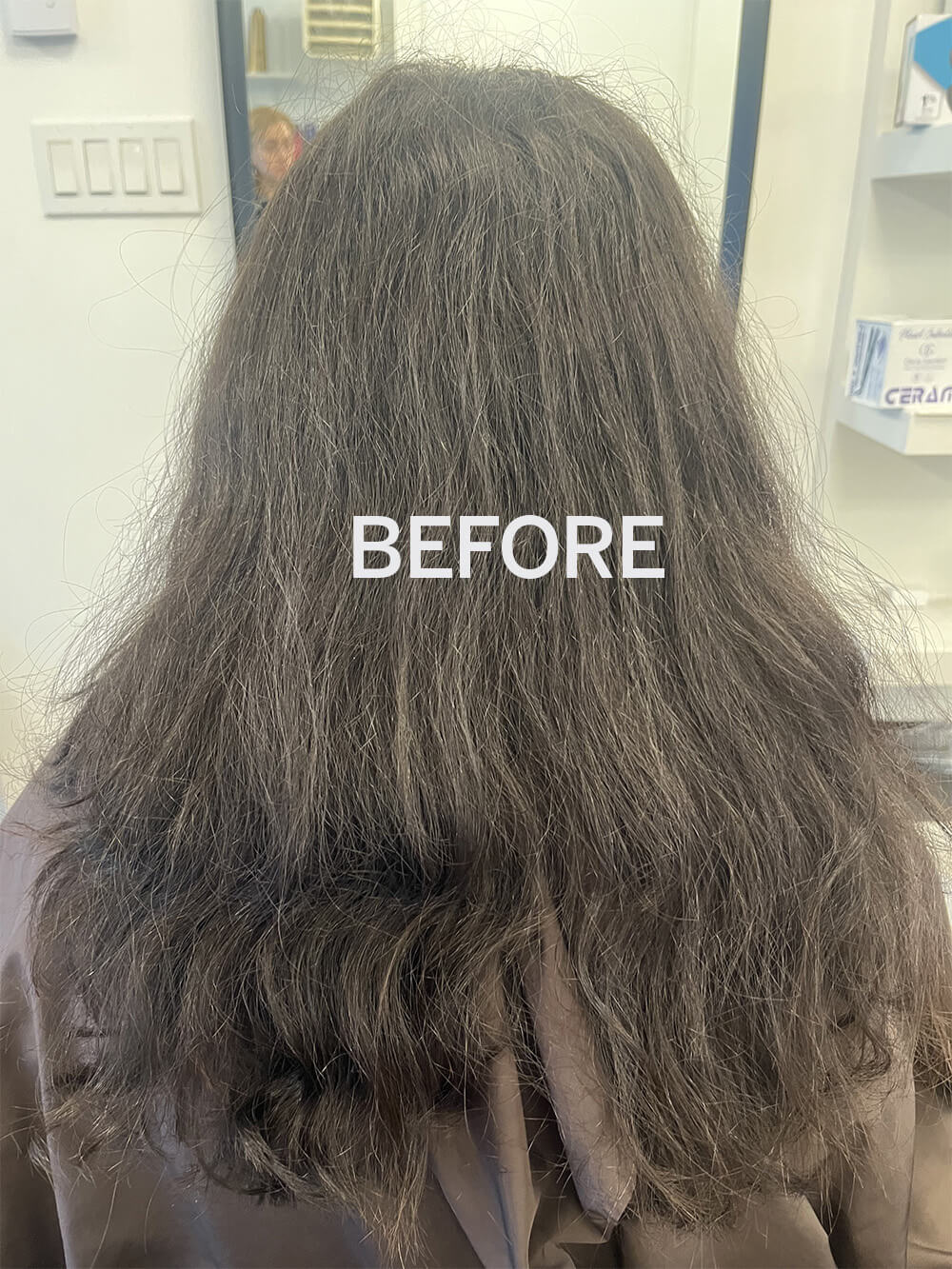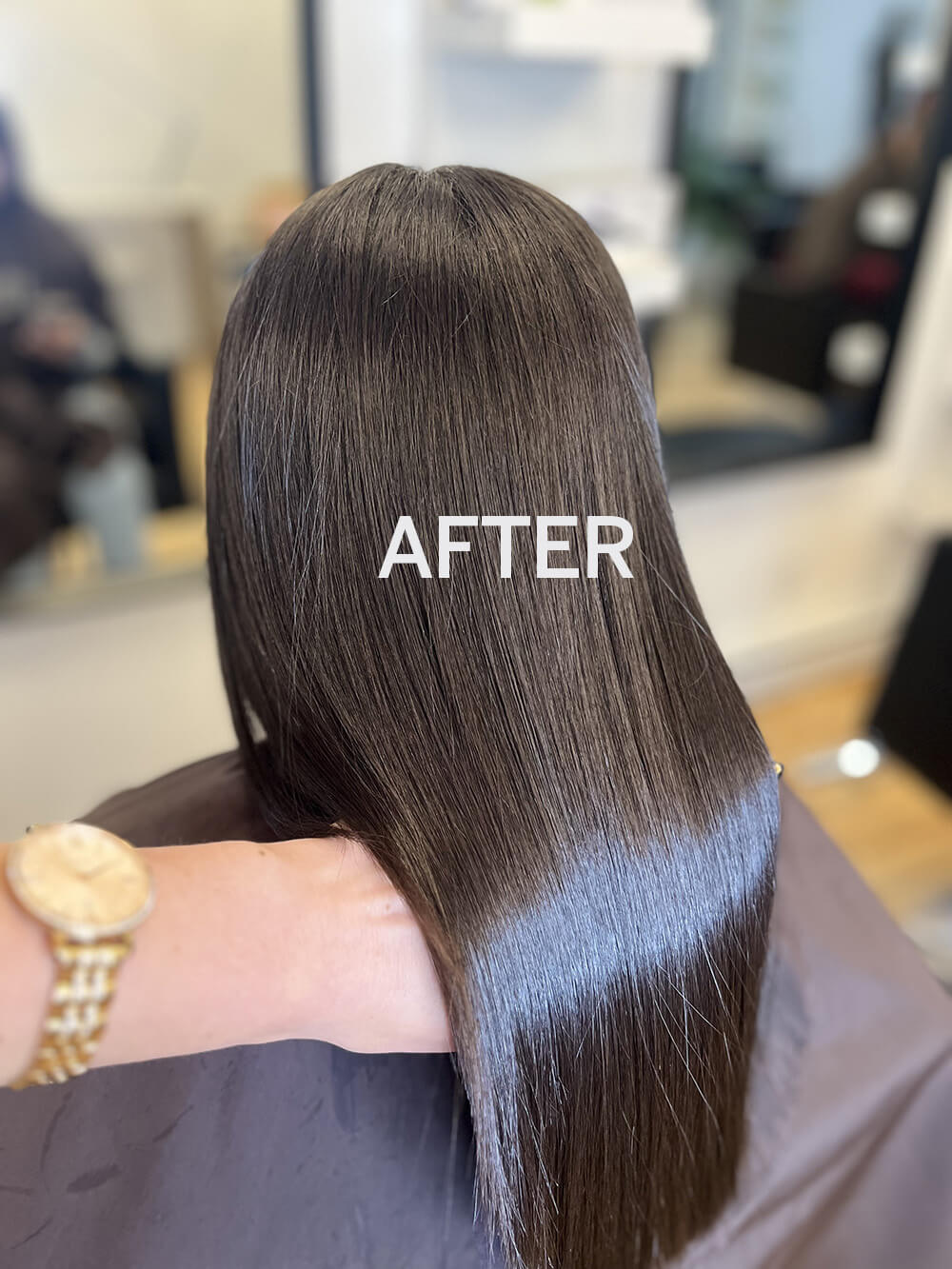I. Introduction
Are you tired of struggling with frizzy or curly hair? Do you spend hours straightening your hair with a flat iron? If so, you might want to consider Taninoplastia Hair Straightening Treatment. This revolutionary hair straightening treatment has taken Montreal by storm, and for good reason. In this article, we'll give you a complete guide to Taninoplastia Hair Straightening Treatment, including what it is, how it works, and who it's best suited for.
II. Understanding Taninoplastia Hair Straightening Treatment
Taninoplastia Hair Straightening Treatment is a natural alternative to traditional hair straightening treatments that use harsh chemicals like formaldehyde. Instead, it uses tannin, a substance extracted from plants, to straighten and condition your hair. The process involves applying a tannin solution to your hair, blow-drying it, and then straightening it with a flat iron. The tannin solution is then sealed into your hair using a special heat-activated mask.
The benefits of Taninoplastia Hair Straightening Treatment are numerous. Not only does it straighten your hair, but it also conditions it, leaving it smoother and shinier than before. It's also a much safer and more natural alternative to traditional hair straightening treatments, which can cause damage to your hair and even your health.
One of the main differences between Taninoplastia and other hair straightening treatments is that it doesn't contain formaldehyde or other harmful chemicals. This means that it's much safer for you and your hair. It's also suitable for all hair types, including curly, frizzy, and damaged hair.
III. Who Should Get Taninoplastia Hair Straightening Treatment?
Taninoplastia Hair Straightening Treatment is suitable for a wide range of hair types, including curly, frizzy, and damaged hair. It's particularly effective on hair that's difficult to manage, as it tames even the most stubborn curls and waves. It's also a great option for people who want to avoid harsh chemicals and want a more natural alternative to traditional hair straightening treatments.
However, there are some people who should avoid Taninoplastia Hair Straightening Treatment. For example, if you have very fine or thin hair, you may not be a good candidate for this treatment. It's also not recommended for pregnant or breastfeeding women, as the effects of tannin on unborn or nursing babies are not yet known.
IV. How to Prepare for Taninoplastia Hair Straightening Treatment
Before you schedule your appointment for a Taninoplastia Hair Straightening Treatment, it's important to know how to prepare your hair. Here are some tips:
1. Avoid washing your hair for at least 24 to 48 hours before the treatment. This will ensure that your scalp's natural oils can help protect your hair during the treatment.
2. Avoid using any hair stylings products like gels, mousse, or hairspray on the day of your appointment.
3. Make sure your hair is completely dry before you arrive at the salon.
4. It's also recommended to trim any split ends or damaged hair before the treatment. This will help the treatment to be more effective and your hair to look its best.
When preparing for your appointment, it's important to communicate with your hairstylist about your hair goals and any concerns you may have. Your hairstylist can help you choose the right type of Taninoplastia treatment for your hair type and recommend any additional hair care products that may be beneficial.
Choosing the right hairstylist is also important. Look for someone who has experience with Taninoplastia Hair Straightening Treatment and has positive reviews from previous clients. You can also ask for referrals from friends or family members who have had the treatment done before.
V. The Taninoplastia Hair Straightening Treatment Process
The Taninoplastia Hair Straightening Treatment process is a natural way to straighten your hair without damaging it. Here's what to expect during the treatment:
1. Your hairstylist will begin by washing your hair with a special clarifying shampoo to remove any build-up or residue.
2. Next, the Taninoplastia solution will be applied to your hair in small sections, making sure to evenly distribute the product.
3. The solution will be left on your hair for a specific amount of time, depending on your hair type and desired results.
4. After the solution has been rinsed out, your hairstylist will blow-dry your hair and use a flat iron to straighten it.
5. Finally, a neutralizing product will be applied to your hair to lock in the straightening effect.
The entire process typically takes about 2 to 3 hours, depending on the length and thickness of your hair.
After the treatment, it's important to avoid washing your hair for at least 48 hours to allow the product to fully set. You should also avoid using any hair styling products during this time.
VI. Maintenance and Aftercare of Taninoplastia Hair Straightening Treatment
After getting the Taninoplastia Hair Straightening Treatment, it's essential to maintain and care for your hair properly to ensure long-lasting results. Here are some tips to help you prolong the effects of the treatment:
1. Wait before washing your hair: It's best to wait for at least 48 hours after the treatment before washing your hair. This allows the product to settle into your hair and ensures that the treatment is effective.
2. Use sulfate-free shampoo and conditioner: Sulfates can strip the hair of natural oils, causing it to dry out and damage. Using sulfate-free shampoo and conditioner helps to keep your hair moisturized and healthy.
3. Avoid heat styling tools: The Taninoplastia Hair Straightening Treatment makes your hair straight, so there's no need to use heat styling tools like straighteners or curling irons. Using these tools can cause damage to your hair, making it dry and brittle.
4. Use a wide-tooth comb: It's best to use a wide-tooth comb to detangle your hair after washing it. This helps to prevent breakage and damage.
5. Get regular touch-ups: To maintain the results of the Taninoplastia Hair Straightening Treatment, it's recommended to get touch-ups every three to six months, depending on your hair type.
6. Avoid swimming: Chlorine and saltwater can damage your hair and strip away the treatment's effects. If you must swim, wear a swim cap to protect your hair from the chemicals.
7. Avoid coloring your hair: It's best to avoid coloring your hair for at least two weeks after the treatment. Coloring your hair before this time can cause damage to your hair.
8. Protect your hair from the sun: Sun exposure can damage your hair, causing it to become dry and brittle. To protect your hair, wear a hat or use a hair product that contains SPF.
VII. Possible Side Effects and Risks of Taninoplastia Hair Straightening Treatment
Like any hair treatment, Taninoplastia Hair Straightening Treatment has its risks and side effects. Some potential side effects include:
1. Dry and itchy scalp: Some people may experience a dry and itchy scalp after the treatment. This is a temporary side effect that should go away on its own.
2. Allergic reactions: In rare cases, people may experience an allergic reaction to the Taninoplastia Hair Straightening Treatment. If you experience any itching, swelling, or redness, contact your hairstylist immediately.
3. Hair breakage: Overuse of the treatment can cause hair breakage and damage. It's essential to get touch-ups at the recommended intervals and follow the aftercare instructions.
4. Unsatisfactory results: Some people may not achieve the desired results after the treatment. This could be due to hair type, product application, or hairstylist's skill level.
To avoid or minimize these side effects, it's crucial to choose a qualified hairstylist who has experience with the Taninoplastia Hair Straightening Treatment. It's also essential to follow the aftercare instructions and not overuse the treatment.
If you experience any side effects after the treatment, contact your hairstylist immediately. They can help determine the cause of the side effects and recommend the appropriate course of action.
VIII. Taninoplastia Hair Straightening Treatment vs. Nanoplastia
In recent years, hair straightening treatments have become increasingly popular, and there are now a variety of options available. One popular alternative to Taninoplastia is Nanoplastia, a Brazilian keratin treatment that claims to leave hair smoother, shinier, and more manageable. So, what are the differences between these two treatments, and which one is right for you?
Nanoplastia Hair Straightening Treatment
Nanoplastia is a type of Brazilian keratin treatment that uses nanotechnology to penetrate the hair shaft and fill in any gaps or breaks. The treatment contains natural ingredients like amino acids, collagen, and keratin, which work together to repair and strengthen hair from the inside out. Nanoplastia is designed to reduce frizz, add shine, and improve manageability, making it a popular choice for those with curly, frizzy, or unruly hair.
Taninoplastia Hair Straightening Treatment
Taninoplastia is a newer type of hair straightening treatment that uses tannins derived from oak bark to straighten and smooth hair. The treatment is formaldehyde-free and contains natural ingredients like acai oil, jojoba oil, and wheat protein, which work together to nourish and strengthen hair while eliminating frizz and reducing volume. Taninoplastia is designed to be a gentler alternative to traditional hair straightening treatments, making it a popular choice for those with damaged, chemically treated, or fragile hair.
Differences between Taninoplastia and Nanoplastia
While both Taninoplastia and Nanoplastia are designed to straighten and smooth hair, there are some key differences between the two treatments. The main difference is in the ingredients used: Nanoplastia contains keratin, while Taninoplastia contains tannins. Additionally, Nanoplastia is designed to penetrate the hair shaft and fill in any gaps, while Taninoplastia works by coating the hair with a protective layer that eliminates frizz and reduces volume.
Another difference between the two treatments is in the application process. Nanoplastia typically takes longer to apply and requires a longer processing time, while Taninoplastia can be applied more quickly and has a shorter processing time. Additionally, Nanoplastia requires a longer period of time before the hair can be washed or styled, while Taninoplastia allows for immediate washing and styling after the treatment.
Which treatment is better for your hair type?
The answer to this question depends on a variety of factors, including your hair type, the condition of your hair, and your desired results. If you have curly, frizzy, or unruly hair and are looking for a treatment that will leave your hair smoother, shinier, and more manageable, Nanoplastia may be the right choice for you. On the other hand, if you have damaged, chemically treated, or fragile hair and are looking for a gentler alternative to traditional hair straightening treatments, Taninoplastia may be the better option.
Ultimately, the best way to determine which treatment is right for you is to consult with a professional hairstylist who can assess your hair type and condition and recommend the best treatment for your individual needs.
IX. How much does the Taninoplastia Hair Treatment Cost in Montreal?
The cost of Taninoplastia Hair Straightening Treatment in Montreal can vary depending on a variety of factors, including the length and thickness of your hair, the salon you choose, and the experience of the hairstylist. On average, you can expect to pay between $250 and $500 for a Taninoplastia treatment in Montreal. Our price varies between $150 and $385.
Factors that affect the cost of Taninoplastia Hair Straightening Treatment include the cost of materials, the cost of labor, the length and thickness of your hair, the salon you go to, and the experience level of your hairstylist.
To save money on Taninoplastia hair straightening treatment, you can consider going to a salon that offers promotions or discounts. You can also ask your hairstylist if they offer any package deals for multiple treatments. Additionally, be sure to take care of your hair properly after the treatment to prolong its effects, so you won't have to get the treatment as often.
Frequently Asked Questions (FAQ) about Taninoplastia Hair Straightening Treatment
Q: What is the difference between Taninoplastia and other hair straightening treatments?
A: Taninoplastia is a natural, organic, and formaldehyde-free hair straightening treatment that uses tannins from plants to straighten the hair, while other treatments may use harsh chemicals like formaldehyde or keratin.
Q: How long does Taninoplastia hair straightening treatment last?
A: The results of Taninoplastia hair straightening treatment can last for up to 6 months, depending on how well you maintain your hair and how often you wash it.
Q: Can I color my hair before or after Taninoplastia hair straightening treatment?
A: It is recommended to color your hair before the treatment, as the color may not take as well after the treatment. However, you can color your hair after the treatment, but it is recommended to wait at least two weeks.
Q: Is Taninoplastia hair straightening treatment suitable for all hair types?
A: Taninoplastia hair straightening treatment is suitable for all hair types, including curly, frizzy, damaged, and colored hair.
Q: Is Taninoplastia hair straightening treatment safe?
A: Taninoplastia hair straightening treatment is safe and formaldehyde-free, making it a healthier alternative to other hair straightening treatments.
XI. Conclusion
In conclusion, Taninoplastia hair straightening treatment is a natural, organic, and formaldehyde-free alternative to other hair straightening treatments that are becoming increasingly popular in Montreal. It is suitable for all hair types and can last up to 6 months, depending on how well you maintain your hair. To get the best results from the treatment, it is important to choose a qualified hairstylist, prepare your hair before the treatment, and follow the aftercare instructions carefully. We encourage our readers to try Taninoplastia hair straightening treatment and experience the benefits for themselves.




